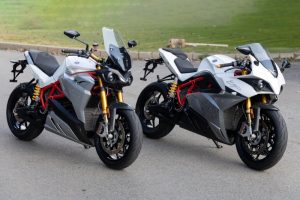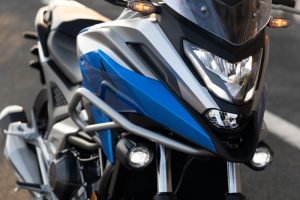If you like bakkies, you’ll like the Hilux GD-6 even more than you liked its less powerful predecessor, but if like me, you’re ambivalent about SA’s love affair with bakkies in general, you’ll probably still prefer to head down the SUV road.
You see, in RSA the bakkie was originally a two-door workhorse used by plumbers and the like to stash all their tools in a capacious load area that doubtless even then attracted the interest of the light-fingered set roaming the streets with little better to do than take forceful ownership of someone else’s property.
But then some clever marketing person worked out that it was a good idea to extend the cabin, add two doors and an uncomfortable, upright rear bench seat along with a few trinkets normally found in more comfortable saloons and create the double cab.
A life-style dynasty was born that South Africans took to in their droves despite the uncomfortable ride, the relative lack of performance, the cramped rear quarters and the poor security on offer. No-one did it better than Toyota whose Hilux has warded off determined attacks from Henry’s Ranger and all other would-be kings of the genre.
Along with other competing brands, Toyota slowly but surely turned successive generations of the Hilux into gadget-filled devices that grew alarmingly in size but still remained resolutely attached to a ladder frame chassis that guarantees an indifferent ride on anything but billiard smooth surfaces. And we all know that billiard smooth surfaces are not meant to represent the most common parade ground utilised by any bakkie.
Now it so happens that the Amarok with its thrusting V6 power, and the Ford Ranger to a lesser extent with its 2.0 Bi-turbo D put the last generation130kW/450Nm 2.8-GD Hilux around the middle of the bakkie Grand Prix grid which was not something Oom Koos particularly liked.
So, Toyota SA made a decision to bolt in its upgraded 150kW/500Nm four-cylinder 2.8 litre turbo D to at least help Oom Koos keep Oom Sarel in sight in his 190+kW Amarok. The issue is: “Has it worked?” Toyota buffs will trumpet back with an unequivocal “YES” but for me with my somewhat cynical but hopefully rational and analytical approach, it’s simply a better offering than what laboured before. But it’s no jewel in the diesel crown because it’s aurally rather vocal under load and doesn’t quite deliver the outright punch I was expecting. Having mentioned that the decibel levels are higher than anticipated, it should be said that this engine spins more smoothly than it sounds.
Standing start figures are of more relevance in bar debates than they are in the world outside and although Toyota SA refrains apparently from publishing any acceleration data, my research suggests that a 0-100 figure of 10.6s, a massive 3s behind the Amarok, is representative, while the top speed of 175 km/h is as supplied by Toyota SA. So too is a claimed combined fuel thirst of 8.0L/100km, but I recorded what I’m sure is a more truthful yet perfectly acceptable 10.1L/100km.

Ultimately, the 2.8 engine, with its larger capacity cooling system, offers a more relaxed, meatier delivery than before and that in turn makes life easier for the excellent 6-speed auto box that’s also been the recipient of some surgical work to effect quicker changes and reduce slippage. For most, this auto box will make life easier than a clunky manual shift, but it still comes as something of a surprise that in 2021, the gear selector should move via a staggered gate that most manufacturers abandoned years ago.
Now for the bugbear that afflicts all bakkies and always will as long as a backbone is used as an anchor for the body and the suspension – the ride. Toyota has clearly done a lot of work to effect improvements here, and in the knowledge that the engineers need to balance load carrying capacity with wheel articulation, rebound rates, durability and reactions to knobbly road surfaces, their job is not easy.
For the record, the steering has been improved through the use of a variable flow pump that provides better feel despite the high degree of assistance and there’s enough responsiveness built in to make accurate directional changes. In short, even the petitest ladies will have no problem piloting a GD-6 albeit the sheer size might be a problem when it comes to negotiating supermarket car parks.
I also had no complaint with the power and feel of the brakes and have every reason to believe that the Hilux’s off-road ability remains right up with very best. The fitment of all the usual aids such as variable ratio AWD and rear diff lock not to mention remarkable wheel articulation, 700mm wading depth and detailing such as a softened throttle response when 4L is engaged, collectively see to that. Indeed, this Toyota will go to places where most drivers, and especially this one, fear to tread!
As the years have rolled by, so the expectations of bakkie buyers have risen in terms of equipment levels and creature comforts. The Legend responds with a cabin that’s awash with niceties, including rather nasty embossed “stitching” on many of the hard-to-the-touch plastic cladding bits. The ambience is hardly cosseting – where did Toyota find such aroma-less leather? – but it represents a good compromise between comfort and practicality.

New in this application is an 8-inch infotainment touchscreen that now incorporates Apple CarPlay and Android Auto along with a wifi hotspot with 15gb of data. An upgraded nine-speaker – two of them ugly spaceship-like devices on the dash – JBL sound system makes its debut along with a Safety Sense pack that looks out for errant traffic and includes adaptive cruise control.
Externally, you certainly won’t miss the acres of black add-ons, especially around the wheel arches, but it’s the new wraparound headlamps and LED tail lamps that really catch the eye together with smart duo-tone alloy wheels and an especially slick looking luggage bay cover that’s responsible for the RS moniker incorporated in this version’s lengthy model nomenclature.
RS stands not for RennSport but for Roller Shutter, an automated sliding cover that majors on security and convenience, but which does take away some space from a load area now provided with LED lighting.
So, the latest Hilux in Legend 2.8 GD-6 guise certainly can’t be missed aesthetically but the more important issue is whether the new drivetrain does enough to regain what was most definitely lost ground against the opposition. If you make your judgement strictly by the standards of current bakkiedom, the answer is yes, most especially because the new mechanical bits enhance the vehicle’s capabilities on and off-road too.










More Stories
Peugeot 3008 GT Line
2021 Santa Fe nou meer begeerlik
KIA SONET